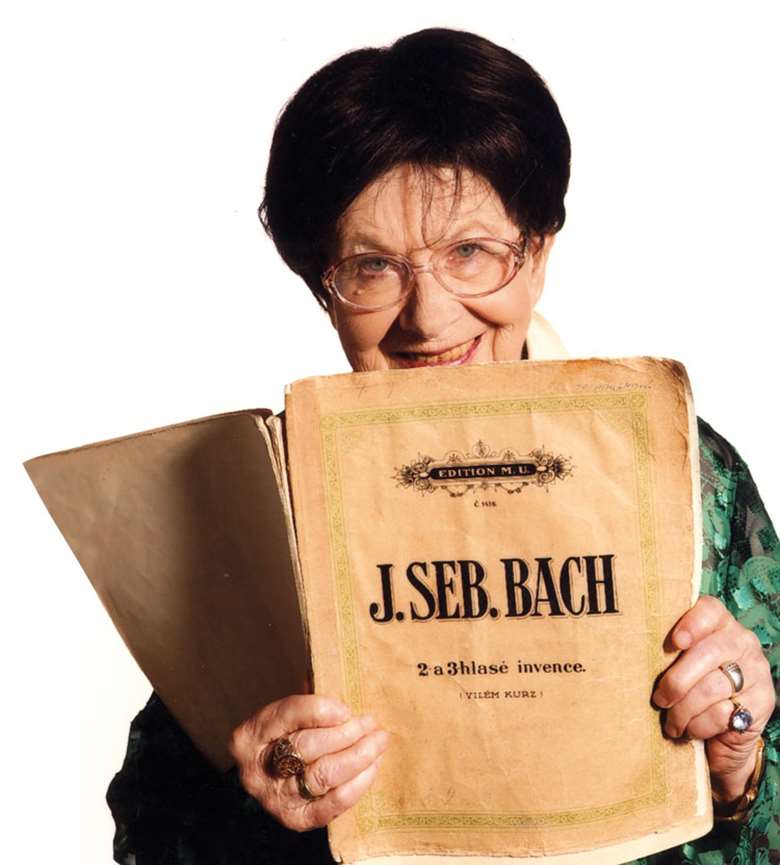Zuzana Růžičková remembered
Rob Cowan
Thursday, September 28, 2017
The great harpsichordist has died at the age of 90. Rob Cowan listens to her finest recordings...

In the January 2017 issue of Gramophone, Rob Cowan reviewed Erato's 20-disc box-set of Zuzana Růžičková's complete recordings of Bach's keyboard works. We are re-publishing this wonderful overview of Růžičková's art below as a tribute to the harpsichordist, who died at the age of 90 on September 27.
Listening to the noble Bach-playing of harpsichordist Zuzana Růžičková while reading the tragic details of her biography makes for a humbling experience. Born in Pizen, Czechoslovakia, Růžičková, who hailed from a Jewish background and who this month celebrates her 90th birthday, originally intended to study with the legendary harpsichordist Wanda Landowska. That was before the Nazi invasion of her homeland and the implementation of the Nuremburg Race Laws made her dream impossible. Thereafter, things went from bad to worse, with spells in the concentration camps at Theresienstadt, Auschwitz and Bergen-Belsen, slave labour in Hamburg and, post-war, the horrors of Communist anti-Semitism. Beyond the Stalin era, Růžičková was able to record her beloved Bach for international distribution and after the ‘Velvet Revolution’ she could reclaim her title ‘Professor’. Although now retired as a public performer she remains active to this day.
Růžičková’s association with Bach is equalled in our era (or thereabouts) only by the symbiotic Bach-performer relationships involving Rosalyn Tureck, Glenn Gould, Helmut Walcha and, in more recent times, Angela Hewitt. When Stephen Plaistow reviewed Book One of Růžičková’s Well-Tempered Clavier (Erato) in December 1971 he commented on her widely employed propensity for contrasting colours, her dramatic changes of registration within fugues (also the ‘echo’ effect she brings to bear in the very first Prelude) and her liking for rhetorical ritardandos. He also observed that the two E flat Fugues had each been ‘married’ to the Prelude from the ‘wrong’ book. This of course is absolutely correct but as Růžičková-pupil Mahan Esfahani points out in his excellent booklet-note for the current reissue Růžičková ‘does not shy from applying sometimes avowedly modern aesthetic choices to the music of Bach, a most obvious example being her choice to pair the E flat major Fugue from the Second Book with the Prelude from the First Book (a decision also made by Busoni in his celebrated edition). She justifies this in lessons by arguing that the grandeur of the Prelude from the First Book is mismatched with the playfulness of its Fugue. An argument based on completely 19th-century ideas, perhaps, but an interesting one in the context of modern concert presentation.’
It’s perhaps worth noting that Růžičková honoured exactly the same practice on her equally engaging but occasionally more expansive 1995 recording of the ‘48’ (Panton); also her choice of contrasting harpsichords for the two books, a more brilliant instrument for what she describes as the ‘onomatopoeic’ Book One and a more robust, even organ-like instrument for the more ‘philosophical’ Second Book. Comparisons are instructive: take the G major Prelude and Fugue from Book Two, for example, where the Erato recording, with its higher pitch, conveys a palpable sense of sparkle, whereas the Panton option, although conceptually similar, is set lower pitch-wise and sounds somewhat darker. Do read Esfahani’s note, which offers many fascinating insights into the intellectual rigour of Růžičková’s teaching methods, as well as details of the instruments used.
So how will modern listeners hear Růžičková’s Erato ‘48’ in particular? I’d say as a grandiloquent reverberation from Landowska’s age, majestic, expressive, with a ‘generous response to the humanity and nobility of the music’ (SP’s phrase) and a marked liking for 16-foot tone (doubling a note an octave below the one specified). The Goldberg Variations are played mostly without repeats but with an abundance of tonal variety, but perhaps the grandest and most joyous of her performances as presented here are the seven keyboard Toccatas (BWV910-916) and various solo concertos, music that seems almost to have been composed with Růžičková’s outgoing but strictly ordered brand of virtuosity in mind.
The sonatas with strings are especially memorable. Pierre Fournier’s warm, loose-limbed playing in the gamba sonatas suggests deep musical compatibility while Josef Suk contributes tonal lustre to the sonatas with violin. The French and English Suites imply formal rather than relaxed dance routines – although often viscerally exciting these tend to be forceful, strict-tempo affairs – and the six Partitas (plus the larger-scale French Overture) replicate the dance element on a grander scale, a transformation that suits Růžičková’s epic view of them. By contrast she revels in such miniature masterpieces as the Sinfonias and Inventions and the shorter Preludes. A personal favourite among the remaining works is the Capriccio on the departure of a beloved brother, which Růžičková invests with the sort of characterisation, pathos and vivid spirit that Landowska herself brought to it many years earlier (RCA).
Landowska’s well-known quip ‘you play Bach your way, I’ll play him his way’ fits the agenda here more or less perfectly. There’s a sense of rightness to Zuzana Růžičková’s Bach that transcends fads and fashions and the deadening impact of scholarly dogma. Some might find it just a mite too stately, its persistent propensity for shifting colours and registrations intrusive. ‘In your face’ is the appropriate modern phrase I suppose, but there isn’t a musical face in existence I’d rather confront than Bach’s and I thank Zuzana Růžičková for this sublime close encounter.







